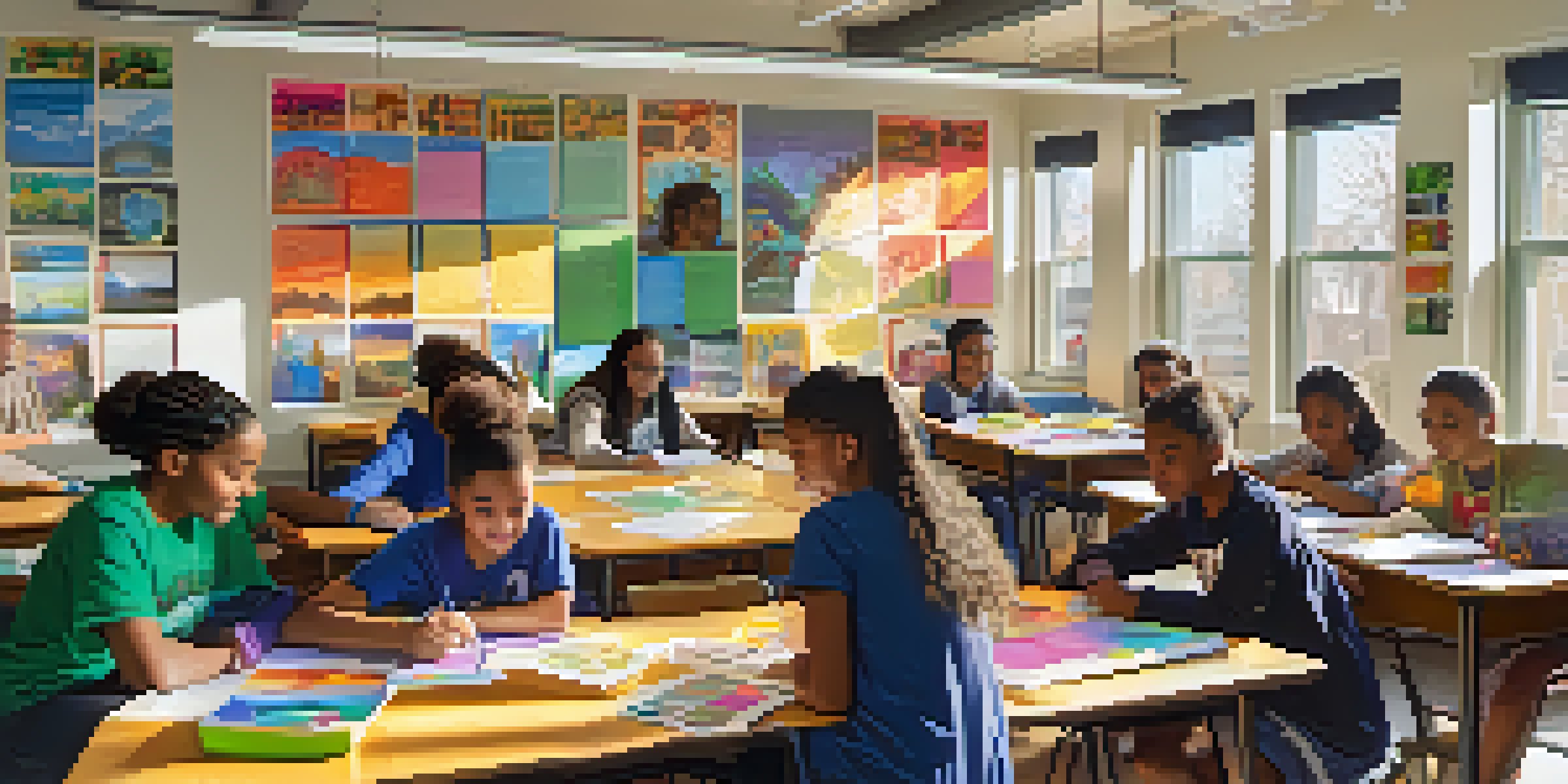Incorporating Environmental Justice into Culturally Inclusive Curriculum

Understanding Environmental Justice in Education
Environmental justice is about ensuring that all communities, especially marginalized ones, have equal access to a healthy environment. This concept is crucial in education, as it shapes our understanding of how various groups experience environmental issues differently. For instance, a community with limited resources may face more pollution and fewer green spaces, impacting their health and wellbeing. By recognizing these disparities, educators can better tailor their curriculums to address the unique challenges faced by diverse communities.
The Importance of Culturally Inclusive Curriculum
A culturally inclusive curriculum acknowledges and celebrates diversity, ensuring that students feel represented and valued in their learning environment. When students see their cultures reflected in the curriculum, they are more likely to engage and connect with the material. This approach not only fosters a sense of belonging but also encourages critical thinking about different perspectives, especially regarding environmental issues. By integrating cultural narratives, educators can illuminate the unique relationships various communities have with their environments.
Environmental Justice in Education
Environmental justice ensures that marginalized communities have equal access to a healthy environment, influencing how educators address diverse challenges in their curriculums.
Bridging Environmental Justice and Culture
Bridging the gap between environmental justice and cultural inclusivity requires intentional planning and collaboration. Educators can incorporate local environmental issues into lessons, allowing students to explore how these problems intersect with their cultural identities. For example, discussions around water rights in Indigenous communities can highlight historical injustices while fostering a deeper understanding of environmental stewardship. This connection empowers students to advocate for solutions that resonate with their own experiences.
Strategies for Inclusion in Curriculum Design
Designing a culturally inclusive curriculum that emphasizes environmental justice involves several strategies. First, educators can include diverse voices and narratives in their lesson plans, ensuring that students learn from a variety of perspectives. Group projects can also encourage collaboration among students from different backgrounds, fostering a richer learning experience. Additionally, integrating field trips to local ecological sites can make these concepts tangible and relatable, strengthening students' connection to their community.
Culturally Inclusive Curriculum Benefits
A culturally inclusive curriculum enhances student engagement by reflecting diverse cultures, fostering a sense of belonging and encouraging critical thinking about environmental issues.
Engaging Students with Real-World Issues
Engaging students with real-world environmental issues helps them apply classroom learning to their communities. For instance, organizing local clean-up events or advocating for sustainable practices can empower students to take action. By working on projects that directly impact their surroundings, students cultivate a sense of agency and responsibility. Such experiences not only enhance their understanding of environmental justice but also inspire them to become proactive members of their communities.
Assessing the Impact of Inclusive Curriculums
Assessing the impact of integrating environmental justice into culturally inclusive curriculums is vital for continuous improvement. Educators can solicit feedback from students about their engagement and understanding of the material. Additionally, tracking student involvement in community projects can provide insights into how well these lessons translate into action. By evaluating these elements, teachers can refine their approaches and ensure that they meet the diverse needs of their students effectively.
Community Collaboration Enhances Learning
Collaborating with community stakeholders enriches the curriculum by integrating local insights and resources, making environmental justice more relevant to students' lives.
Collaborating with Community Stakeholders
Collaboration with community stakeholders enhances the relevance and authenticity of the curriculum. Partnering with local environmental groups, cultural organizations, and even parents can bring valuable insights and resources into the classroom. These partnerships can lead to guest lectures, workshops, or community projects that enrich the learning experience. By involving the community, educators can create a more holistic understanding of environmental justice that resonates with students’ lives.
The Future of Education and Environmental Justice
The future of education lies in embracing both environmental justice and cultural inclusivity as core principles. As educators, there is a responsibility to prepare students for a world that increasingly values diversity and sustainability. By creating curriculums that reflect these ideals, we can cultivate informed, compassionate citizens ready to tackle the environmental challenges of tomorrow. Ultimately, this approach not only enriches the educational experience but also contributes to a more equitable and sustainable society.